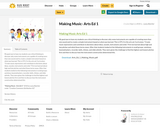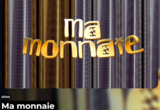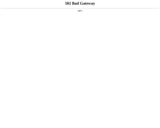
Strategies for parents and teachers on closing the math gap between home and school
- Subject:
- Math
- Material Type:
- Activity/Lab
- Homework/Assignment
- Primary Source
- Author:
- Jessica Lander
- Margaret Caspe
- Grace Tatter
- Date Added:
- 12/20/2018

Strategies for parents and teachers on closing the math gap between home and school

Students reflect on their school year, creating a digital scrapbook consisting of images and text to present to their school community.

Students create large-scale models of microfluidic devices using a process similar to that of the PDMS and plasma bonding that is used in the creation of lab-on-a-chip devices. They use disposable foam plates, plastic bendable straws and gelatin dessert mix. After the molds have hardened overnight, they use plastic syringes to inject their model devices with colored fluid to test various flow rates. From what they learn, students are able to answer the challenge question presented in lesson 1 of this unit by writing individual explanation statements.

As a weighted plastic egg is dropped into a tub of flour, students see the effect that different heights and masses of the same object have on the overall energy of that object while observing a classic example of potential (stored) energy transferred to kinetic energy (motion). The plastic egg's mass is altered by adding pennies inside it. Because the egg's shape remains constant, and only the mass and height are varied, students can directly visualize how these factors influence the amounts of energy that the eggs carry for each experiment, verified by measurement of the resulting impact craters. Students learn the equations for kinetic and potential energy and then make predictions about the depths of the resulting craters for drops of different masses and heights. They collect and graph their data, comparing it to their predictions, and verifying the relationships described by the equations. This classroom demonstration is also suitable as a small group activity.

In this lesson, students learn about sound. Girls and boys are introduced to the concept of frequency and how it applies to musical sounds.

My goal was to have my students use critical thinking to discover why some instruments are capable of creating more than one sound and to create a simple instrument based on what was learned. This is CP1.5 in the arts ed. Curriculum. “Create music expressions and contribute to decisions about ideas, sounds, instruments and order.” First we learned about high and low pitches and what those terms mean. After that students looked at the following instruments in small groups: autoharp, boomwhackers, recorder, bells, chimes, and slide whistle. They were given the challenge to find the highest and lowest pitches first and then to discuss how the instrument construction determined this.

The purpose of this instructional task is to motivate a discussion about adding fractions and the meaning of the common denominator. The different parts of the task have students moving back and forth between the abstract representation of the fractions and the meaning of the fractions in the context.

All students learn differently. It is important to understand
the thought processes of all students. I wanted to use the
class blog to demonstrate my students’ thinking and increase
their engagement. I worked with all the different areas of
learning styles presented at this PD day. I created different
assignments and I had the students put their work on our
class blog.

We all know there are some big decisions coming up on Tuesday. Kid President walks you through some good (and bad) ways to make BIG decisions.
This inspiring video can be used with students as a prompt to discuss the decisions they have made in the past, as well as ones they may be grappling with right now.
Students could reflect on an example of each time they've used the strategies presented and if they were effective or not.

In this short demo/activity, a balloon with baking soda in it is stretched over the mouth of a flask or bottle containing vinegar. The balloon is tipped so that the baking soda falls into the vinegar, and the reaction creates carbon dioxide, which inflates the balloon. The activity is part of the children's book, The Air We Breathe.

This task requires students to study the make-a-ten strategy that they should already know and use intuitively. In this strategy, knowledge of which sums make a ten, together with some of the properties of addition and subtraction, are used to evaluate sums which are larger than 10.

This task is to introduce students to the concept of reading an analog clock.

This microtutorial will show you how to create a free account in the Resource Bank. You don't need an account to use the bank, but there are many perks to having one.

Making a 10 provides a technique to help students master single digit addition. The task is designed to help students visualize where the 10's are on a single digit addition table and explain why this is so. This knowledge can then be used to help them learn the addition table.

This is an activity about 3-D imagery. Learners can follow the instructions to create their own 3-D images using a digital camera, photo editing software, and red-blue 3-D glasses.

Archeology offers the most tangible evidence of earlier civilizations. Although archeology has already provided invaluable information pertaining to the life styles and skills of the peoples from this region of West Africa, the archaeological record is still incomplete. The figurative sculptures featured in this resource furnish one part of the historical puzzle of this region. These handsome terracotta sculptures are from the Inland Niger Delta region near Djenne (pronounced JEH-nay; also spelled Jenne), one of several important trading cities that grew and developed during the Mali Empire.

SÉRIE
Ma monnaie
La série Ma monnaie cherche à stimuler les connaissances antérieures des enfants et des élèves sur les pièces et les billets de monnaie canadiennes. Sont-ils tous identiques? Comment faire pour les différencier?
Il y a 45 épisodes d'une minute de durée chacune.

In the Arizona desert, farmers depend on an ample supply of irrigation to grow their crops. As climate changes, irrigation managers face a host of issues to keep the water flowing.

This art history video discussion examines Edouard Manet's "Corner of a Cafe-Concert", 1878-80 (National Gallery, London).

This art history video discussion examines Edouard Manet's "Emile Zola" 1868, oil on canvas (Musee d'Orsay, Paris). This portrait was painted in appreciation for the support Zola gave to Manet in his 1866 essay in La Revue du XXe siecle and during Manet's independent exhibition held along side the Universal Exposition in 1867.